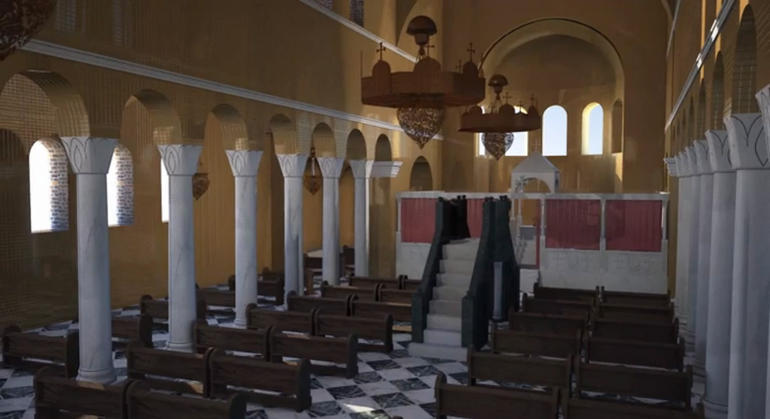The vessel was found in the Mediterranean Sea and was sent to the UK to be built.
The marble pieces of the church will form part of an exhibition at the Ashmolean Museum in Oxford called 'Storms, War And Shipwrecks: Treasures From The Sicilian Seas.'
The director of the museum joked that he hopes building the church will be "easier than an Ikea wardrobe".
The Emperor Justinian (c482-565) was a prolific builder of churches in his efforts to regulate Christianity across his empire.
He was based in Constantinople, Turkey, and used large stone-carrying ships, loaded up with prefabricated marble church interiors, sent out from quarries around the Sea of Marmara to sites in Italy and North Africa.
Some of the ships never made it to their end destination.
Many were very heavy and slow and risked becoming unbalanced and sank during stormy weather.
Gerhard Kapitan, German archaeologist, excavated a shipwreck off the south-east coast of Sicily in the 1960's and found hundreds of prefabricated marble elements of basilica.
The discovery included 28 columns, slabs and pieces of a pulpit.
Much of the ships load still remains on the seabed and the site has been under investigation again since 2012.
The museum will use a selection of pieces to reconstruct the church interior, to let visitors to experience the building which spent more than a thousand years on the seabed.
Dr Alexander Sturgis, director of the Ashmolean, said it is the first time they have attempted to reassemble the church, adding: "We hope it will be easier than an Ikea wardrobe."
Dr Paul Roberts, keeper of the department of antiquities at the Ashmolean, said: "Visitors to this exhibition will be taken on a journey through Sicily's fascinating history.
"Here at the Ashmolean, for the first time, this story will be told exclusively through spectacular finds from the sea, because it is the sea which has always been the lifeblood of the island's unique and diverse culture."
The exhibition can be seen at museum from June September 2016.





